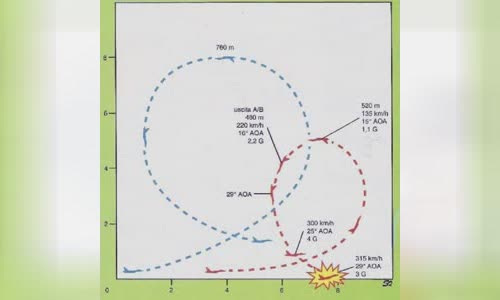Soviet pilot Stankiavichus was able to launch an escape seat, but decided to fly the Su-27 to the end to prevent it from crashing into civilians on September 9, 1990.
30 years ago, on September 9, 1990, a Soviet Su-27 crashed to the ground and exploded after a few minutes of performance at the Salgareda air show in northeast Italy.

Expected (green) and actual (red) flight path of the Su-27 Photo: Aviationist
The incident shocked viewers at the scene and by television viewers.
This is a modal window.
Beginning of dialog window.
End of dialog window.
Investigations showed that about 15 minutes before the accident, Stankiavichus took off from the Rivolto military airport, where the Frecce Tricolori performance army was located in the Italian Air Force, to perform at the exhibition.
However, he had difficulty locating the Salgareda airport, although he had been flown a day earlier, most likely due to the grass-ground runway mixed with the surrounding green fields and difficult to recognize from
Stankiavichus linked radio communications with event management when the plane was quite close to the demonstration area, which put a lot of strain on the pilot.
During the next round, the Su-27 approached the runway in a state of wing drop and flaps, speed 250 km / h and 30-50 m from the runway.
At the top of the ring, the fighter Su-27 reached a speed of 135 km / h, an altitude of 520 m and an angle of attack 15 degrees.
Once at the last 3/4 corner of the loop, the Su-27 was only 350 meters from the ground and the nose was pointing straight down.
At this point, the aircraft was in flat flight but could not regain altitude.
According to aviation experts, in the process of making the round too narrow, Stankiavichus can completely launch the escape seat to save himself, even before the plane crashes.
Expected (green) and actual (red) flight path of the Su-27.
The investigation found the incident originated in humans, in which a series of different factors led to the crash.
Requesting a second flight also put additional pressure on Stankiavichus, while the direction of the Sun and lighting conditions also affected the Soviet pilot's ability to estimate altitude in the ring.
Stankiavichus died in an accident at the age of 46, and his body was buried in his native Lithuania.



 Lilia Soriano Castillo
Lilia Soriano Castillo







